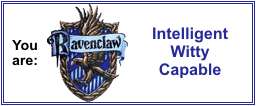
The Broken Window
by Jeffrey Deaver
Hodder Paperbacks 2009
Data mining is
the industry of the 21st century. Commercial companies collect information about us from thousands of sources—credit cards, loyalty programs, hidden radio tags in products, medical histories, employment and banking records, government filings, and many more, then analyze and sell the data to anyone willing to pay the going rate.
Some people approve, citing economic benefits; others worry about the erosion of privacy.
But no one has been prepared for a new twist: A psychotic killer with access to the country's biggest data miner—Strategic Systems Datacorp—is using detailed information to work his way into the lives of victims, rape, rob and kill them and then blame unsuspecting innocents for the crimes. The killer's voluminous knowledge of the victims and his ability to plant damning evidence mean that even the most vocal protests of innocence go ignored by the police and juries.
The perp has, in short, found a perfect means to literally get away with murder—until one of his fall guys turns out to be Lincoln Rhyme's cousin, Arthur, who is facing certain conviction for first-degree murder. Though the two Rhymes haven't had any contact for years, Lincoln agrees to look into the case. In the process he unravels a spider web of crime that the killer, known only as Unknown Subject 522, has woven.
Rhyme, Amelia Sachs and the cast of the previous Rhyme books find themselves up against their most insidious villain, a man obsessed with collecting—from junk on the street to intimate details about our lives to the ultimate trophy: human lives themselves, which he sees as mere streams of data. This is a man proficient with razors and guns, but whose most dangerous weapon is information, which he wields with ruthless precision against those he targets on whim . . . and against those who try to stop him.
"How," Rhyme says, "can you defend yourself against the man who knows everything?"
As the invisible 522 attacks his pursuers through identity theft and outright torture and murder, the stymied police have to turn to the likely source of the data the killer uses—the eerie and monolithic Strategic Systems Datacorp, headed by the legendary data mining pioneer, Andrew Sterling, whose "mission" is the creation of a global empire based not on politics or money but on information.
"Knowledge is power," Sterling continually reminds.
And for Lincoln Rhyme, the case has an added dimension: Arthur's reemergence draws him back to his childhood and teen years and forces the criminalist to grapple with a tragedy from his past he has avoided for decades.
The Broken Window is classic Deaver fare: Taking place over three frantic days, the novel features dozens of twists and turns, fascinating, highly researched details—about identity theft, data mining and threats to privacy, as well as forensic science—and, of course, offers the typical multiple surprise endings the author is known for crafting.
Inside this novel were 6 pages of information categories that are normally collected about every single person. Very detailed information. VERY SCARY
Profile
Name
AKA and Aliases
Current Address
Addresses for past 10 years
Citizenship
Race
Ancestral History
National Origin
Physical description
Biomatic details (photographs, fingerprints etc)
Tissue sample
Medical History
Political affiliation
Fraternal affiliations
Professional affiliations
Religious affiliations
Military Service
Military ID
Weapons training
Units served with
Donations made
Psychiatric History
Myers Briggs type
Sexual preferences
Hobbies and Interests
Clubs
Spouses
Parents
Children
Siblings
Grandparents (maternal & paternal)
Other blood relations (living & dead)
Neighbours (past & present)
Co-workers
Clients
Acquaintances
Employment history (past & present)
Lifestyle
Food & Drink
Clothes
Household items
Appliances
Purchases (last 7 days back to last 5 years)
Books purchased
Books borrowed (library)
Other library activities
Films seen
Cable TV programs watched
Travel (last 5 years)
Languages known
GPS devices
RFID reports
PDA & mobiles
Criminal arrests & history
Watch lists
Surveillance
Restraining orders
Whistleblower history
Civil litigations (for and against)
Employment history, salary, reasons for discharge
Citations & reprimands
Days absent
Income (IRS) - foreign income, non reported income, assets (personal and financial)
Credit reports
Credit rating
Financial transactions (going back 5 years)
Telephone numbers - landline, cell and blackberry
old phone, fax and pager numbers
Internet Service Providers (ISPs) used - past & present
favorites/bookmarks
email addresses and contacts
email activity
websites - personal and profesional
websites visited (last 5 years)
Blogs
Social sites (Myspace, Facebook, Twitter etc)
Avatars
online personas
mailing lists
buddies & Friends
SEO results
Post Office boxes
They want to know everything about you and then they want make a lot of money by SELLING it. The only way to avoid this is to go "off the grid".
 The Professor and the Madman (USA)
The Professor and the Madman (USA)


































